We may receive a commission when you use our affiliate links. However, this does not impact our recommendations.
Below, you’ll find the list of “full-time” speakers (those who are teaching more than one session), plus a glimpse at each speaker’s session topics, for Woodworking in America 2013 (October 18-20 in Greater Cincinnati). While we still need to contract a handful more of experts for single classes, we didn’t want to wait any longer to let you know what we know about who will be there for this year’s “Ultimate Woodworking Weekend.”
And by next week, we’ll have the schedule and class descriptions in good enough shape to release them for your planning pleasure – plus, the web site should be live within a couple weeks as well, with discount hotel rates, travel information and more. Oh – and registration, of course.
So without further ado, here’s the majority of this year’s experts, and a little bit about them (with pictures as available):
Peter Follansbee (17th-century joinery, 17th-century carving and spoon carving) began learning traditional woodworking in 1980 when he attended a John Alexander chairmaking course at Drew Langser’s Country Workshops in Marshall, N.C. He went on to take many courses at Country Workshops and gave away his power tools in the mid-1980s.
In 1988, Peter began an informal apprenticeship with Alexander as they investigated 17th-century-style joinery, which has since become Peter’s sole woodworking focus. He’s been employed as the joiner at Plimoth Plantation in Plymouth, Mass., since 1994, and his work is seen in museums including the Museum of Fine Arts in Boston and the Chipstone Foundation’s collection at the Milwaukee Art Museum. He and Alexander are co-authors of “Make a Joint Stool from a Tree: An Introduction to 17th-Century Joinery” – which is, in my opinion a must-have book for those interested in traditional woodworking techniques – whether or not you want to build a joint stool. You can read more about Peter at pfollansbee.wordpress.com.
Peter Galbert (Windsor chairmaking, chairmaking tools & techniques and working with curved parts) is a full-time chairmaker and instructor, whose work is internationally exhibited and collected. He teaches at his historic workshop in central Massachusetts as well as at craft schools across the country, and also creates and makes tools for chairmaking (among other things, he invented the Galbert Caliper, a direct reading caliper for spindle turning, that we reviewed here).
Peter has written articles for Fine Woodworking and is currently working on a book for Lost Art Press. When he isn’t in the workshop, Peter enjoys raising goats, making maple syrup and gardening. You can see more of his work at petergalbertchairmaker.com and read his blog at chairnotes.blogspot.com.
Ejler Hjorth-Westh (20th-century design, curved work and the business of woodworking) is a boatbuilder and fine furniture maker who earned his teaching credentials in Denmark, served a boatbuilding apprenticeship in California and graduated from the College of the Redwoods Fine Woodworking Program – where he’s since taught for more than a decade.
Ejler has contributed to numerous woodworking magazines and books on woodworking, including “Studio Furniture” (Schiffer) and the Lark 500 series in “500 Chair,” “500 Tables” and “500 Cabinets,” and he’s won numerous awards for his work. He’s currently building his web site, where you can see a few examples of his work, at ejler.com.
Silas Kopf (marquetry design, marquetry techniques and furniture as art) has been making studio furniture since 1973, and served an apprenticeship with Wendell Castle for two years at the start of his career. In 1988, he was the recipient of a Craftsman’s Fellowship from the National Endowment of the Arts, which he used to study traditional marquetry techniques at the École Boulle in Paris, then traveled around Europe to expand his knowledge of continental decorative arts.
Silas’ work, which is found in museums and collections around the world, incorporates a wide array of techniques and materials. He’s written numerous articles for woodworking magazines and is the author of “A Marquetry Odyssey” (Hudson Hills), and he’s filmed the DVD “The Master Techniques of Marquetry.” Take a look at his incredible designs at silaskopf.com.
Mary May (carving tools & techniques, leaf carving and linenfold panel carving) is a full-time professional woodcarver in Charleston, S.C. She has studied with a variety of European master carvers, focusing on the designs and techniques that have been used for centuries. Mary is a member of the Society of American Period Furniture Makers and has written several woodcarving articles for their yearly journal, as well as articles for Popular Woodworking (including one in our upcoming August issue).
She has recently been a guest on the PBS TV series “The Woodwright’s Shop” with Roy Underhill and is a woodcarving instructor at his school, The Woodwright’s School. Mary also teaches at a variety of other schools and locations around the country, including Marc Adams School of Woodworking, Kelly Mehler School of Woodworking and a variety of Woodcraft Supply Stores. She has also created several instructional DVDs on carving details for period furniture, such as the ball-and-claw foot, acanthus leaf and concave and convex Newport shell, and offers online carving classes. You can read more about Mary at marymaycarving.com.
Peter Ross (traditional nails, traditional tools and dealing with annealing) worked at several living history museums before working with smith Dick Everett to learn more about historic house hardware and reproductions. He opened his own smithy on Deer Isle, Maine, in 1976, and in 1979, became a journeyman blacksmith and later shop master at Colonial Williamsburg, where he worked until 2006.
Today, Peter works in his smithy in Siler City, N.C., where he makes traditional hardware and tools. Along with Jay Gaynor, Peter spent months measuring and drawing the tools from the Seaton chest for the recent publication of the second edition of “The Tool Chest of Benjamin Seaton” (Tools and Trades Historical Society), and he’s filmed a couple of videos for us, the first of which, “Forging a Compass,” is now available. You can read more about Peter in an article (it’s free online) from our November 2012 issue. His web site is peterrossblacksmith.com.
Christopher Schwarz (toolboxes & workbenches, joinery planes and accurate miters) is the former editor of Popular Woodworking Magazine and is now a contributing editor who is regularly in our pages, plus he writes twice a week on his PW hand tool blog. A long-time amateur furniture maker and hand-tool enthusiast, he began working with wood at age 8 when his family members built their first home on their farm outside Hackett, Ark., using hand tools because there was no electricity.
Since starting his own publishing company, Lost Art Press (with partners John Hoffman and Lucy May), he has published many books on traditional hand-tool skills and woodworking, and traveled around the world teaching. He’s a co-author of “The Joiner and Cabinet Maker,” and author of “The Anarchist’s Tool Chest,” “Handplane Essentials,” “The Workbench Design Book,” “Workbenches: From Design & Theory to Construction & Use,” and numerous articles, DVDs and more.
Roy Underhill (timber framing, “mystery mallet” and “mighty mitered breadboard ends), a former master craftsman at Colonial Williamsburg (and the living history museum’s first master housewright), is the host of the PBS show “The Woodwright’s Shop,” the longest-running how-to show on television. Since the show’s inception, Roy has championed the use of traditional hand tools and techniques and has featured guests ranging from well-known woodworkers including Michael Dunbar, Steve Latta and Frank Klausz, Mary May, Peter Follansbee and Christopher Schwarz, to specialist artisans in blacksmithing (including Peter Ross), cooperage and more. He’s also written a number of books on traditional craft and shop practices, including “The Woodwright’s Shop: A Practical Guide to Traditional Woodcraft” (UNC Press) and “The Woodwight’s Guide to Working with Wedge & Edge” (UNC Press).
Several years ago, Roy founded The Woodwright’s School, a small woodworking school in Pittsboro, N.C., that’s a step back in time – students must leave tape measures and cell phones at the door as they learn with the tools and techniques of the early 20th Century. Through his books, show, classes and live presentations, Roy has introduced thousands of people to traditional hand-tool woodworking. Roy is a member of the Society of American Period Furniture Makers and the Early American Industries Association. (You’ll find DVDs of Seasons 1-11 of “The Woodwright’s Shop” and many of Roy’s book on our “Roy Underhill Page” at ShopWoodworking.com.)
Don Williams (period finishing, history of furniture making) is a Maryland and Virginia-based conservator, educator, author and finisher, and has over the past 40 years worked on preserving and restoring some of the most interesting objects in our nation’s public and private collections. He has written and taught on an array of subjects related to artifact conservation, woodworking and historical wood finishing. In his spare time he passionately pursues varied interests, including economics, metal casting and homesteading.
His current projects include the almost-finished relocation/reconstruction of a 19th-century timber frame barn as a studio/classroom/command center at his remote mountain retreat (complete with its own micro-hydropower system), replicating the chairs of Samuel Gragg, building a japanned Queen Anne highboy, fabricating a classical style marquetry chevalet and the requisite collection of historically inspired workbenches, and publishing the annotated translation of J.A. Roubo’s 1765 masterpiece “L’Art du Menuisier” (due out very soon from Lost Art Press) and an exquisitely illustrated book on the H. O. Studley tool cabinet and workbench (forthcoming from LAP).
And of course, Robert W. Lang (SketchUp and joinery), Glen D. Huey (inlay, wood prep and fast joinery), Steve Shanesy (turning) and I (dovetail techniques) will be there too (but you knew that).
We’ll also have at least five more single-session instructors to announce soon, as well as the full list of class descriptions, the schedule, information about the Friday Night all-conference event, a Saturday extra event and more. Stay tuned!
Here are some supplies and tools we find essential in our everyday work around the shop. We may receive a commission from sales referred by our links; however, we have carefully selected these products for their usefulness and quality.




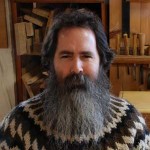

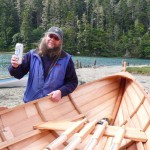


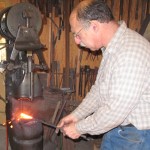
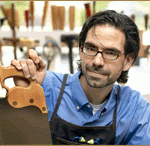
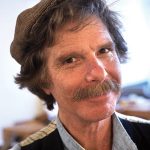







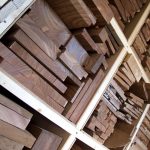
I’d love to go this year, but finding ticket prices on the internet seems to be an exercise in futility. Does anyone have that information handy? Thanks!
In which City, NC is Peter Ross located? Could it be SIler?
Just askin’
Sad to see Ron Herman’s name missing from the list. He was an unexpected highlight for me at WIA 2012- his room was always filled to capacity, so I must not be alone in feeling that way.
How about tackling compound dovetails in your class this year, Megan?
I just finished reading the April issue. The compound dovetail tray required several readings to get the mental imagery right–only to find I was thinking too hard about it.